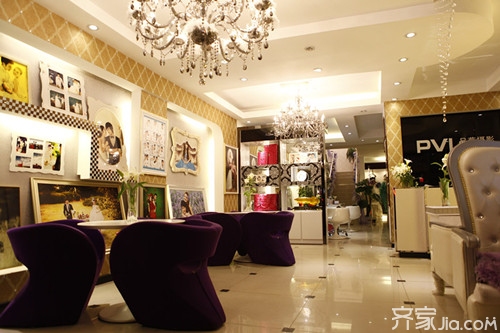With the development of modern times and science and technology, people's environmental requirements for homes are also increasing. In order to protect the health of the people, the state and relevant departments have issued a series of norms and standards to ensure the safety of people's living environment. The implementation of these standards has made air monitoring a reality and has played a major role in controlling indoor pollution. Here we introduce: indoor air pollution detection standards and indoor air pollution "defense", "governance" with both hands. Indoor air testing standards: 1. "Code for indoor environmental pollution control of civil construction projects" GB50325-2001 (2006 version) is a national mandatory standard and must be enforced; "indoor air quality standard" GB/T18883-2002 is a national recommended standard, is not mandatory The laws and regulations are only mandatory if the parties to the contract have agreed to meet the standards in the agreement. 2. After the decoration of the consumer is finished, it shall be tested in accordance with "Guidelines for Pollution Control of Indoor Environment of Civil Building Project" GB50325-2001 (2006 edition); after the furniture is in place or after staying for a certain period of time, the "Indoor Air Quality Standard" GB/ T18883-2002 Indoor air quality testing. Indoor air testing requirements: 1. Representativeness: The sampling time, sampling location and sampling method must comply with the relevant regulations so that the collected samples can reflect the overall real situation. 2. Integrity: It is mainly emphasized that the implementation of the inspection plan should be complete, that is, the number of samples and the integrity, systematization and continuity of the measurement data must be guaranteed according to the plan. 3. Comparability: It is required that the results of the same sample between laboratories or the same laboratory be comparable. 4. Accuracy: The degree of agreement between the measured value and the true value. 5. Precision: Good reproducibility and reproducibility of the measured value. There are four categories of 19 parameters for measuring the indoor air quality standard. When the civil construction project is accepted, the hazardous substances that often occur in the indoor environment should be detected: formaldehyde, benzene, ammonia, helium, and total volatile organic compounds (TVOC) to supervise the project. The construction party controls the material selection and usage of the civil construction project. However, for private civil buildings, specific monitoring items should be determined according to the specific conditions of the monitored objects, including the material characteristics of the interior decoration and the amount of testing fees the homeowner can accept. In addition, inhalable particles and bacteria are tested according to different seasonal requirements. The total number and so on. In short, the determination of the number of sampling points and the selection of monitoring items must be selected for the object of detection. For acceptance of civil construction projects, the source of indoor air pollution should be strictly monitored and controlled; for the inspection of private properties, the characteristics of on-site decoration layout and the willingness of homeowners must be taken into consideration, and the level of indoor air pollutants must be correctly reflected. Indoor air pollution "defense", "governance" grasp: First of all: People who want to refurbish their homes must pay attention to the quality of the decoration materials when selecting decoration materials. They should also pay attention to the materials of the decoration materials and whether they are green environmental protection materials that meet the national standards. The use of green decoration materials in home renovation can greatly reduce the indoor air pollution risk. Second, the use of green environmental protection materials that conforms to national standards during renovations cannot completely eliminate indoor air pollution. After decorating the house, it is best to put some green plants useful for indoor air treatment indoors. Chlorophytum, tiger Pilan, etc. have a good effect on air purification. Activated Carbon is also a natural indoor air treatment item. Third, if the above method does not effectively reduce the degree of indoor air pollution, then we must find a professional indoor air management company to carry out air treatment, so that the indoor air quality can be effectively improved. Editor's summary: Indoor air pollution detection standards and indoor air pollution "defense", "governance" are introduced here, hoping to help you, more information, please pay attention to this site. Indoor production tutorial retest indoor pollution detection indoor plant indoor incense
SIC
Emery, also known
as Silicon Carbide (SiC), is produced by high-temperature smelting of
resistance furnaces using quartz sand, petroleum coke (or coal coke), and
sawdust (need to add salt when green silicon carbide is produced). Silicon
carbide also has a rare mineral, Moissanite, in nature. Silicon carbide is also
called Carbon silica. Among the non-oxide high-tech refractory raw materials
such as C, N, B, etc., silicon carbide is the most widely used and the most
economical one, and it can be called gold grit or refractory sand. At present,
China's industrial production of silicon carbide is divided into two types of
Black Silicon Carbide and green silicon carbide, are hexagonal crystals, the
specific gravity of 3.20 ~ 3.25, the microhardness of 2840 ~ 3320kg/mm2.
Silicon carbide
has two common basic varieties of black silicon carbide and green silicon
carbide, both of which are α-SiC. 1 Black silicon carbide contains
about 95% of SiC. Its toughness is higher than that of green silicon carbide. It
is mostly used for processing low tensile strength materials such as glass,
ceramics, stone, refractory materials, cast iron and non-ferrous metals. 2
Green silicon carbide contains more than 97% SiC, self-sharpening, mostly used
for processing hard alloys, titanium alloys and optical glass, also used for
honing cylinder liners and grinding high-speed steel cutters. In addition,
there is cubic silicon carbide, which is a yellow-green crystal made by a
special process, used for the production of abrasives for bearing
superfinishing, surface roughness can be processed from Ra32 ~ 0.16 microns to
Ra0.04 ~ 0.02 micron.
Silicon Carbide Silicon Carbide,Black Silicon Carbide,Silicon Carbide For Abrasives,High Purity Silicon Carbide Hwa Seng Resources (Hong Kong) Co., Limited , https://www.hwaseng-resources.com
